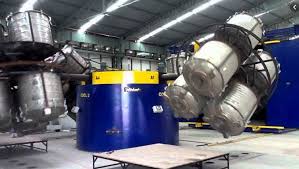
The Future of Plastics: Rotational Molding’s Role in Industry Evolution
Rotational molding, a developing approach widely used for developing hollow plastic goods, requires a delicate harmony of science and art to obtain optimum effects. Here’s a deeper leap into the particulars of learning this revolutionary procedure:
Refining Materials Selection:
Picking the right fabric is very important for productive rotational molding. Factors such as UV resistance, compound compatibility, and mechanical properties has to be considered in accordance with the product’s planned application. Polyethylene remains to be the most frequently applied materials because of its overall flexibility, longevity, and expense-efficiency.
Mastering Fungus Design and style:
Fungus style plays a vital role in rotational molding. Reaching consistent wall surface density, proper write perspectives, and intricate characteristics demands consideration in the design and style phase. Sophisticated CAD application and simulation resources aid technicians improve mold geometry for max efficiency and aspect top quality.
Fine-Tuning Method Guidelines:
Managing procedure variables including heating temperatures, rotational pace, and cooling down time is vital for generating substantial-high quality components. Exact temp management assures constant material movement and syndication, whilst optimum rotational pace inhibits material pooling and unequal wall fullness.
Implementing High quality Confidence Procedures:
Top quality certainty is integral on the rotational molding procedure. Assessment tactics for example ultrasonic screening, aesthetic assessment, and tension testing assist determine defects at the beginning of the production cycle, making sure that only pieces getting together with rigid high quality requirements are sent to consumers.
Adopting Innovation:
Constant advancement brings advancements in rotational molding technological innovation. From automation and robotics to environmentally friendly resources and ingredient production tactics, adopting new technologies enhances method effectiveness, minimizes direct times, and enlarges the options for product or service customization.
Collaborating Across Disciplines:
Profitable rotational molding demands alliance across numerous disciplines, including design, technology, resources technology, and developing. By fostering interdisciplinary teamwork and knowledge sharing, manufacturers can influence collective expertise to get over challenges and generate advancement.
Buying Training and Education:
Coaching and schooling are essential for establishing competent experts effective at learning the skill of rotational molding. Hands-on education programs, seminars, and industry certifications inspire people with the knowledge and capabilities found it necessary to master this specialized area.
Verdict:
Mastering the ability of Rotational Molding demands a holistic method that includes materials variety, fungus layout, approach optimizing, high quality confidence, advancement, collaboration, and on-going training. By embracing these concepts and continuously polishing their tactics, producers can discover the total prospective of rotational molding and produce extraordinary products which meet the developing needs of clients and sectors.